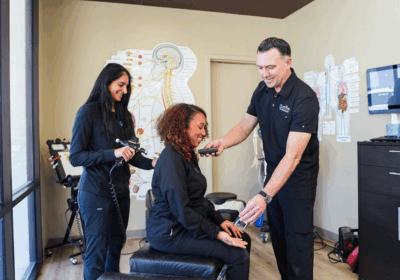
How do online doctors improve patient convenience?
Medical attention often requires scheduling appointments days in advance, driving to clinics, and sitting in waiting rooms. This traditional approach doesn’t always align with our fast-paced lives. Thankfully, digital solutions have arrived in healthcare, bringing doctors directly to patients through virtual platforms.
The healthcare industry has adopted technology which allows practitioners to examine, diagnose, and manage patients remotely. This shift removes geographical barriers and enables rural residents to receive quality healthcare without travelling long distances. Many patients who previously postponed medical consultations due to time constraints now find relief in quick online appointments.
Technology behind virtual medical visits
Most telehealth platforms use secure video conferencing technology like businesses for remote meetings. These systems integrate medical questionnaires, payment processing, and scheduling tools. Mobile applications have simplified this further, allowing patients to speak with healthcare providers from anywhere with an internet connection.
The process starts with booking an appointment on a telehealth platform. During the consultation, doctors assess your condition through video examination and questioning. If you qualify, doctors issue a medical certificate online, which can be downloaded immediately after the appointment. The documentation can be collected without additional documentation from the visit.
Types of certificates available remotely

Virtual healthcare providers can issue several types of medical documentation:
- Sick notes for employers
- School absence justifications
- Travel insurance certificates
- Fitness-to-work assessments
- Short-term disability documentation
Patients need a medical certificate online
Typical situations include sudden illness preventing work attendance, minor infections requiring rest, or ongoing condition management. Students missing exams or classes also seek online documentation of their medical certificate as proof of legitimate absence. These certificates carry the same legal weight as those issued during in-person visits when provided by licensed physicians.
Security measures protecting patient information
Digital healthcare platforms implement advanced encryption to protect sensitive medical data. Most services comply with healthcare privacy regulations and store information on secure servers. Patients typically access their records and certificates through password-protected accounts, ensuring documentation remains confidential.
Virtual consultations generally cost less than in-person appointments. This price difference stems from reduced overhead expenses for online providers. Insurance companies increasingly cover telehealth services, recognizing their effectiveness and cost efficiency. Patients without insurance often find medical certificates from online doctors more affordable than urgent care facilities.
Improvements coming to telehealth
Emerging technologies like AI-assisted preliminary assessments and home diagnostic tools will enhance virtual care capabilities. Wearable devices that transmit vital signs directly to doctors during consultations will make remote examinations more comprehensive. With these advancements, we can treat a broader range of conditions digitally.
Convenience factor summarized
The convenience of consulting medical certificate online doctors cannot be overstated. Patients save time previously spent travelling and waiting. Healthcare becomes more accessible to those with mobility limitations, caregiving responsibilities, or demanding work schedules. The ability to receive professional medical advice and documentation from home significantly improves how people access healthcare services.
This evolution in medical service delivery demonstrates how technology can remove traditional barriers to healthcare access. While not replacing all forms of in-person medical care, online doctor services effectively address many routine healthcare needs while maximizing patient convenience and minimizing disruption to daily life.














